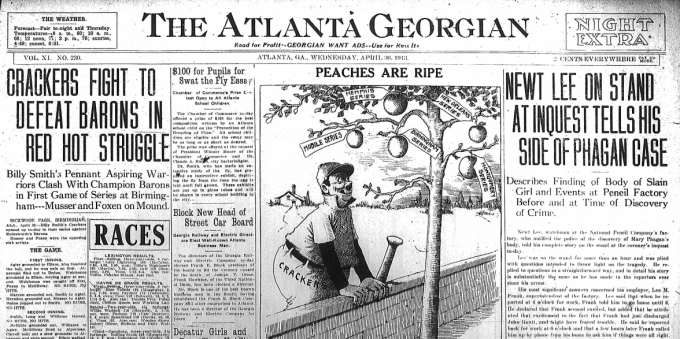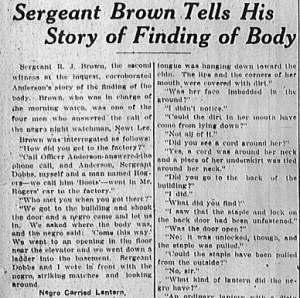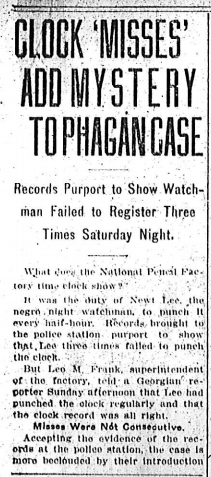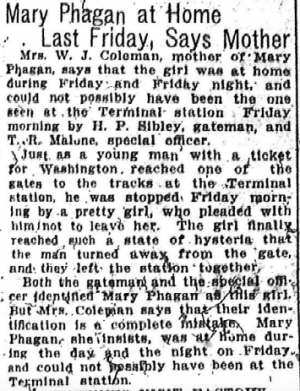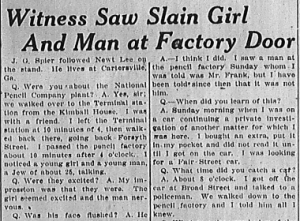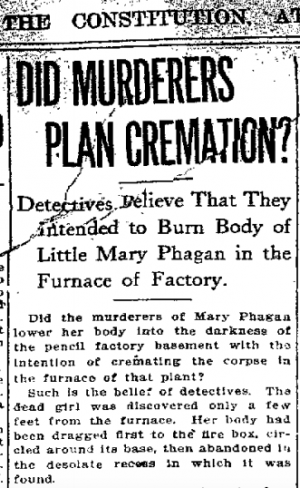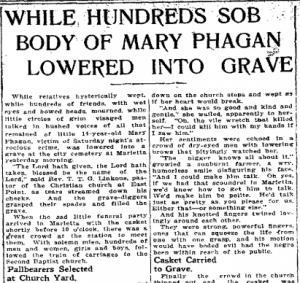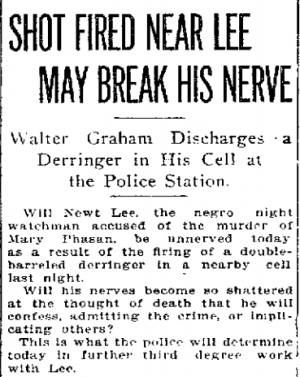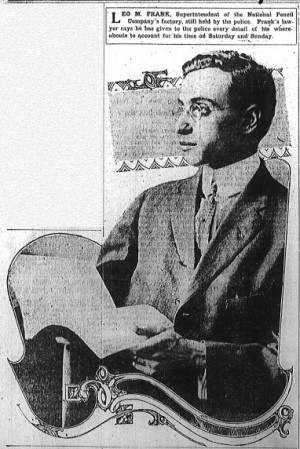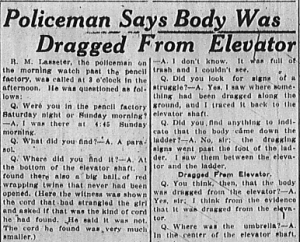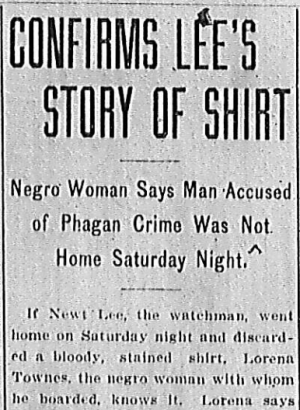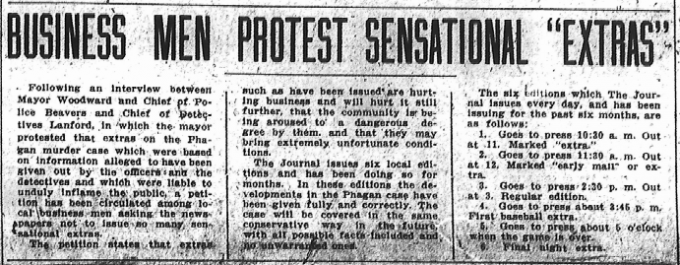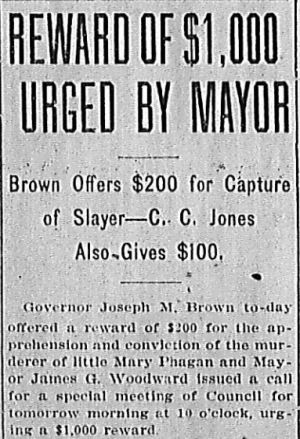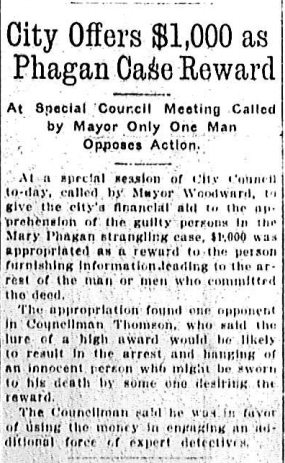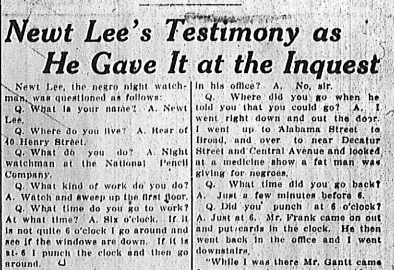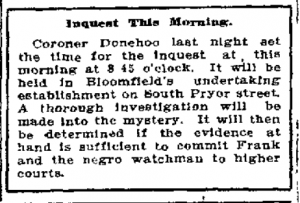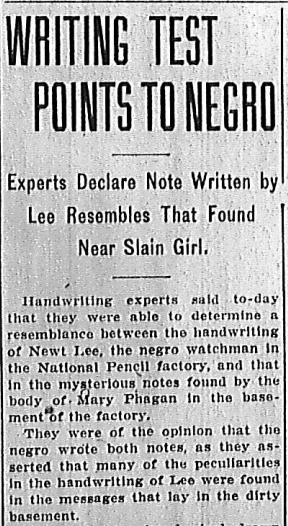 Another in our series of new transcriptions of contemporary articles on the Leo Frank case.
Another in our series of new transcriptions of contemporary articles on the Leo Frank case.
Atlanta Georgian
Wednesday, April 30th, 1913
Experts Declare Note Written by Lee Resembles That Found Near Slain Girl.
Handwriting experts said to-day that they were able to determine a resemblance between the handwriting of Newt Lee, the negro watchman in the National Pencil factory, and that in the mysterious notes found by the body of Mary Phagan in the basement of the factory.
They were of the opinion that the negro wrote both notes, as they asserted that many of the peculiarities in the handwriting of Lee were found in the messages that lay in the dirty basement.
The Georgian already had drawn attention to the probability that the negro wrote the notes, or directed them written to divert suspicion.
That the notes were written to throw suspicion on another was suggested by the wording of one of the notes which, as deciphered by a Georgian reporter, was as follows:
‘He told me he wood love me laid down play like the night watch did but that long tall black negro did it by his self.”
The theory immediately arose that Lee wrote the notes to turn suspicion on another negro that had been about the building either from himself or from another person he was trying to shield.
* * *
Atlanta Georgian, April 30th 1913, “Writing Test Points to Negro,” Leo Frank case newspaper article series (Original PDF)

